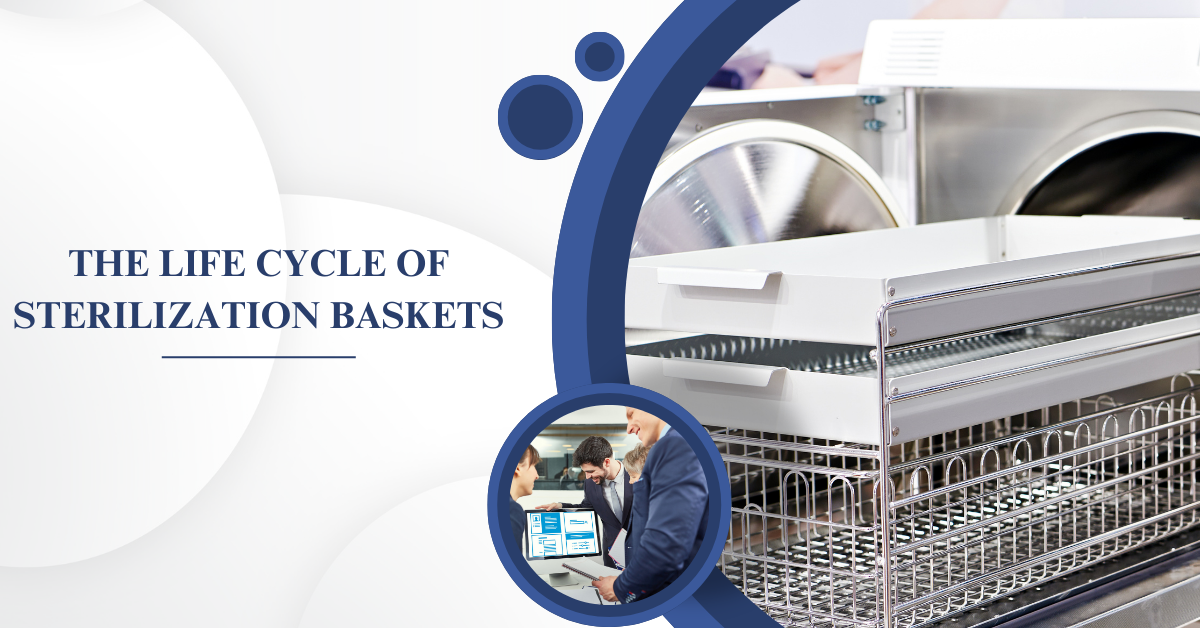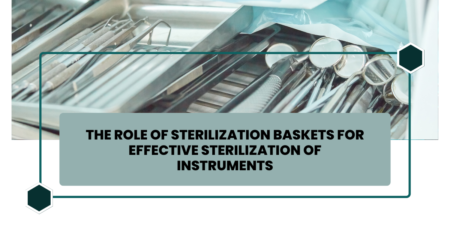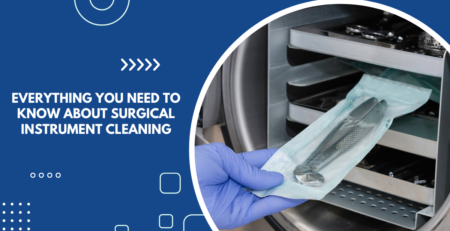
The Life Cycle of Sterilization Baskets
admin2023-12-16T12:04:32+00:00Sterilization baskets play a crucial role in maintaining cleanliness and sterility in various industries, including healthcare, laboratories, and food processing. These unassuming metal or plastic containers are designed to hold and protect delicate instruments, surgical equipment, or other items during the sterilization process. Understanding the life cycle of sterilization baskets is essential for ensuring their effectiveness, longevity, and safe operation. In this article, we will explore the comprehensive life cycle of these indispensable tools, from their manufacturing to eventual retirement.
Manufacturing and Material Selection
The life cycle of a sterilization basket begins with its manufacturing. The choice of materials is a critical factor in determining the basket’s durability and suitability for specific applications. Most sterilization baskets are constructed from stainless steel or medical-grade plastics due to their resistance to corrosion and ability to withstand high-temperature sterilization processes.
The manufacturing process involves cutting, shaping, and welding the chosen material to create the basket’s frame and compartments. The design of the basket, including its size and shape, is tailored to the needs of the end-user and the items it will hold. Quality control measures are implemented during manufacturing to ensure that each basket meets the required standards for strength and cleanliness.
Sterilization and Usage
Once manufactured, sterilization baskets are put to use in various settings, depending on the industry. Hospitals and healthcare facilities use them to sterilize surgical instruments, while laboratories employ them to sterilize glassware and equipment. Food processing plants rely on sterilization baskets to ensure the cleanliness of utensils and containers used in food preparation.
Sterilization processes can vary, but typically involve exposure to high temperatures, steam, or chemicals to kill or remove microorganisms. Sterilization baskets are designed to withstand these harsh conditions, ensuring that the items inside are effectively sterilized without compromising the basket’s structural integrity.
Cleaning and Maintenance
Sterilization baskets require regular cleaning and maintenance to ensure their continued effectiveness and longevity. After each use, they should be thoroughly cleaned to remove any residual contaminants, such as biological materials or chemicals. Depending on the industry and application, baskets may be cleaned manually or in automated washing systems.
Proper maintenance also includes inspecting the baskets for any signs of damage, such as corrosion, bent frames, or loose welds. Any damaged baskets should be repaired or replaced promptly to prevent potential contamination and maintain safety standards.
Reprocessing and Recycling
As sterilization baskets age and wear over time, they may become less effective or develop irreparable damage. In such cases, they should be reprocessed or recycled responsibly. Reprocessing involves disassembling the basket, salvaging any reusable components, and recycling the remaining materials. Stainless steel baskets, for example, can be melted down and reformed into new stainless steel products.
Recycling sterilization baskets not only conserves valuable resources but also reduces environmental impact. Many manufacturers and organizations have implemented recycling programs to ensure that old or damaged baskets are disposed of sustainably.
Upgrades and Customization
The life cycle of a sterilization basket can be extended through upgrades and customization. As technologies advance and industry requirements evolve, older baskets may need modifications to meet new standards. Upgrades can include the addition of specialized coatings for increased corrosion resistance, improved designs for better item placement, or the integration of tracking systems for inventory management.
Customization allows sterilization baskets to be tailored to specific needs. Healthcare facilities, for instance, may require baskets with compartments designed to fit particular surgical instruments. These customized solutions enhance efficiency and ensure that sterilization processes remain effective.
Retirement and Disposal
Eventually, all sterilization baskets reach the end of their life cycle. When a basket is no longer fit for use, it should be retired and disposed of in an environmentally responsible manner. The disposal process may involve recycling or scrapping the basket, depending on the materials used in its construction.
It is essential to follow local regulations and guidelines for the disposal of sterilization baskets, especially if they have been used in healthcare settings where they may have come into contact with biohazardous materials. Proper disposal ensures that any potential contaminants are safely handled and does not pose a risk to public health or the environment.
Conclusion
The life cycle of a sterilization basket encompasses its journey from manufacturing to eventual retirement and disposal. These unassuming yet vital tools play a critical role in maintaining cleanliness and sterility in healthcare, laboratories, and food processing industries. Through proper material selection, usage, cleaning, maintenance, reprocessing, upgrades, customization, and responsible retirement, sterilization baskets can serve their purpose effectively while minimizing their environmental impact. Understanding and managing the life cycle of sterilization baskets ensures the safety of products and patients while contributing to sustainability efforts in various industries.




Leave a Reply